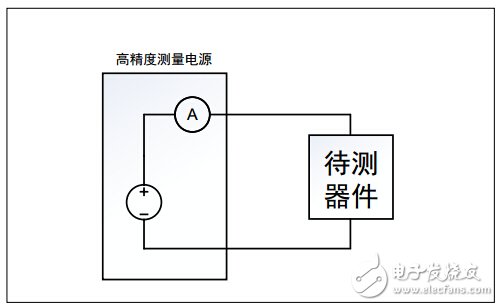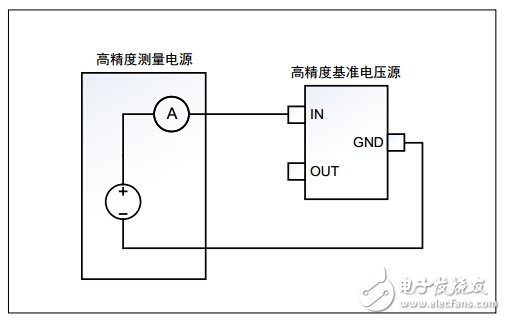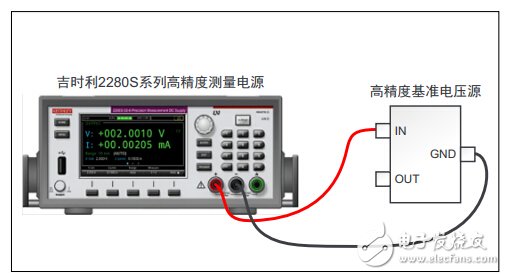Overview
As today's focus is on green mobility and the creation of mobile devices and IoT devices, minimizing power consumption in integrated circuits and electronic components has become a dream for device manufacturers. The lowest power consumption means the lowest current consumption of all integrated circuits and electronic components. In order to perform characterization of these components, the current consumption of the meter must be measured. In the past, power consumption was not a major problem, and measuring the current through the device was very simple because the current level was relatively high, in milliamps or even amps, and was measured using a standard multimeter. Today's devices operate at currents as low as microamps or even lower, requiring more sophisticated equipment for measurements.
This article explores two different approaches to low-current measurement of low-power devices under test (DUT): one is to connect the power supply, the high-precision digital multimeter and the device under test in series, and the other is to use a high-precision measurement power supply. The application notes detail how to configure the 2280S Series high-speed measurement DC power supply for high-precision, low-current measurements.
Connect the power supply to the DMM in series
One way to measure the current through the device is to connect the DMM in series with the circuit and use it to measure the current. With a 6-and-a-half-digit high-quality digital multimeter, high-precision measurement of milliampere current levels is possible. Figure 1 shows the test setup for this method.

Figure 1. Using a power supply in series with a DMM to measure current
Although this method is capable of very accurate measurement of the current through the device, this method can also cause many problems due to the voltage load caused by the digital multimeter during the characterization. Even if the voltage at the power supply output may be at a programmed value, the voltage across the device under test is actually lower than the programmed value because of the voltage load on the digital multimeter. Therefore, the voltage across the device under test is not the programming voltage, which is equal to the programming voltage minus the digital multimeter voltage (VDUT = VSET – VDMM). If the DMM voltage is ignored and the user assumes that the device voltage is equal to the programming voltage, then the power and resistance measurements will have significant errors because the voltage used for the calculation will be higher than the device voltage under test. This voltage drop can also cause problems when testing the device near the lowest operating voltage. If the digital multimeter's voltage load is too high, the device voltage may be lower than the minimum operating voltage and the device will not function properly, resulting in an erroneous measurement.
This voltage drop can be compensated by outputting a higher supply voltage to provide the desired voltage for the device under test. However, the voltage load caused by the DMM varies with the current flowing through it, so compensation is very difficult. The second digital multimeter can be used to directly measure the device voltage, but this will add new instrumentation, which not only increases the cost and complexity of the test system, but can also provide a greater source of error for low current measurements. The DMM brings additional load to the test circuit, causing the current to be higher than the actual current flowing through the device. Although the power supply in series with the DMM is a very simple low current measurement method, it is by no means an ideal method.
Use high precision measurement power
If a high-precision measurement power supply is used, a 6-bit, half-high-quality digital multimeter can be used to measure the current through the device, but it can be made simpler and more accurate. Since the test device requires only one instrument, the test is simplified. Figure 2 shows the test setup.
Since there is only one instrument, testing can be started very quickly because there are fewer devices to set up. Automated measurements are also simpler because only one instrument needs to be programmed. This avoids the synchronization of multiple instruments and allows test engineers to focus on measurement.
When performing device characterization, it is more accurate to use a high-precision measurement power supply than to use a power supply and a digital multimeter. High-precision measurement power supplies measure the current and voltage applied to the device. The current is measured internally, so there is no voltage load on the test circuit like a series DMM. Thus, the voltage across the device is equal to the programming voltage. To further improve accuracy, the device can be directly measured by the program-controlled sense leads of the device port, which allows the high-precision measurement supply to directly compensate for the voltage drop across the test leads that power the device. These test leads have a very high input impedance, so they are actually zero load for the test circuit. With these features, high-precision measurement power supplies enable extremely accurate characterization of the device at any current level. With all of these capabilities integrated into one instrument, high-precision measurement power supplies can significantly reduce test system complexity and cost.

Figure 2. Current measurement with high precision measurement power supply
Measurement of quiescent current of high-precision reference voltage source using 2280S series high-precision measurement DC power supply
Next, we will introduce how to configure the 2280S series high-precision measurement DC power supply to measure the current consumption of high-precision reference voltage without connecting the output. The quiescent current of this voltage reference being measured is given in the datasheet, with a typical current level of only 31μA and a maximum of 35μA. For this measurement, the instrument is configured for maximum accuracy and accuracy.
equipment
High-precision measurement power supplies reduce the number of devices required to make current measurements on the device. In this example, the following devices are used:
• Keithley Series 2280S High Precision Measurement DC Power Supply
• Test leads
• High precision reference
Connect
Figure 3 and Figure 4 show the connections for this test.

Figure 3. Test connection between a high-precision measurement power supply and a high-precision reference source device under test 
Figure 4. Test connection of the 2280S series high-precision measurement DC power supply and the reference device under test.
Testing the connection is fairly straightforward because you only need to connect the two leads (HI and LO) to the device under test. High-precision voltage measurements do not require programmable voltage sensing because the current is extremely low and does not create a large voltage drop across the test leads. Shielded cables are recommended to reduce noise. If the test circuit is grounded, a single point of grounding should be implemented to avoid measurement errors due to ground current loops.
Antique Chandeliers,Wood Bead Chandelier,Large Chandeliers,Flush Mount Chandelier
GUANGDONG LAVIUS LIGHTING CO., LTD. , https://www.laviuslighting.com
